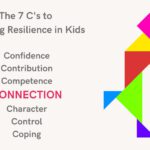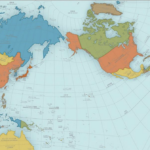6 Tips for Landing a Job Abroad

6 Tips for Landing a Job Abroad
You might be reading this article and probably saying to yourself that it’s not the time. On the contrary, it is THE time! Take advantage to prepare your job search tools.
Here are 6 tips to make it as easy as eating a chocolate bar, or almost:
1.Start with Your Network: It is known that 80% of all jobs are found within your own network. In my experience, a network is a group of people you’ve had contact with professionally or personally regardless its frequency. I remember when I first came to France and had no network or so I thought. I started with the parents at school and quickly, my network grew to people and companies I didn’t yet know. Thanks to activities such as hobbies and parent-teacher conferences that grew my network from a seed to a sunflower.
2. Legal Tip: Before you start writing that all-consuming resume, check what’s needed to include such items as age, date of birth, marital status, nationality and photo. This varies from country to country. For more information, you can go to https://www.visualcv.com/international/ or simply do a Google search with English keywords such as “Spain resume requirements”. Now, it’s completely normal to tell yourself, I’m not putting my age on the resume! That’s illegal in the US. Yes, I completely agree. However, since your job search is outside the US or a US company working internationally, the local law and traditions do apply.
3. Use the Local Language: Chances are that your international function will involve speaking some English. However, to show that you are proficient in the local language and culture, translate your resume, cover letter and any other job search tool so that your cultural agility shines. Especially spell check and proofread! If you need help, try asking a native or advanced speaker to proofread it. First impression counts – first impressions count!

4. Using Technology to Your Advantage: Now that you have your resume nice and spiffy, it’s time to publish it. Now most companies use an ATS (Applicant Tracking System). LinkedIn is an example of such a system where keywords and AI are used to find the right talent/job description fit. In my recruiting experience, I’ve used this tool extensively. And it’s becoming the new normal. Now, if you wish to publish your resume on job boards like LinkedIn, make sure you avoid images/graphs. Why? ATS cannot read them. Stick to simple text with key words to demonstrate your experience and skills. Your resume is then kept in consideration. Now let’s say that you got a lead through a friend and you know that your resume will be read by a person. Then you can keep the creative resume with colors and images.
5. Formalism: In most Western countries, the resume is a personal brochure, highlighting your strengths and accomplishments. It tends to be informal, catchy, attractive. When looking for a job in Asia and Eastern Europe, formalism is the professional landscape, and your job search tools should be modest in tone and include the names of educational institutions and companies.
6. Interview Practice: Once you’ve prepared all the items mentioned, then you’re ready to contact a recruiter for an informational talk or a friend who’s well-versed in interviews. Take time to get to know the culture around interviews, and common questions. Practice makes it permanent. If stress hits, just wiggle your toe and slow down. It brings you back to reality. And it’s well worth it especially when the job description appeals to you. And the interviewer is kind.
These tips have helped me and I hope that it may prepare for your next international employment.
In the words of Louis Pasteur:
“Luck only smiles on well-prepared minds.”
Here’s to your success!
-Tanya PODVRSAN
Tanya's recipe for her success
Tanya’s story may seem familiar to many of us. What to do with a mishmash of experience that is hard pressed to fit into a standard resume? Read on to see what she did with it.
Her employment history goes something like this: Starting at a modest family restaurant, swinging by a Japanese transport company and other multinationals to unemployment in France and finally finishing at a French pharmaceutical.
What to do with this mess? Turn it into a message! Inside TP Talks was born.
“How to accompany personal and professional change accurately?” “How to assist the growth of an international SME with the best talents?” “How to find THE best fit between candidates and managers?”
These 3 questions are now at the heart of her job and passion as a recruiter, trainer, and certified coach.
The recipe?
- Listen using HR expertise and acquired detailed knowledge in management specificities grown in the USA, South America, France, and Europe.
- Add a language (or four): Slovene, English, French, Spanish…a dash of German.
- Simmer with cultural agility. Identify good and bad practices in terms of suitable recruitment, job fit and intercultural management.
- Top it off with good old common sense!
Since adolescence, my path has been a multicultural and professional mixing bowl! Born Slovene, adopted by the US, cared for by Colombians, Germans and French at heart. But I’ve made it work for me.
Title photo by Tanya Podvrsan
Photo by Clem Onojeghuo on Unsplash
I am thrilled to host fellow global mobility professionals as guest bloggers. Today’s contributor is Tanya, here to share her advice on applying for an international job.
About the Author

“How can I find THE purple squirrel for my next global project? “
The perpetual friendly requests transformed my advice into a passion. And then into coaching skills for individuals and SMEs going global. TP Talks was born.
-
 How to move abroad with childrenJune 15, 2022/0 Comments
How to move abroad with childrenJune 15, 2022/0 Comments -

-
 May on the Move 2022 – Sharing Experience of Global LifeApril 30, 2023/
May on the Move 2022 – Sharing Experience of Global LifeApril 30, 2023/ -
 Life and Happiness Advice to my Younger Expat Partner SelfFebruary 10, 2023/
Life and Happiness Advice to my Younger Expat Partner SelfFebruary 10, 2023/
Newsletter Sign Up
Sign up below for monthly newsletter and download
25+ ways to nurture long-distance relationships.
Because sometimes, we just want to feel close to loved ones.
WordPress – Global Mobility Trainer
